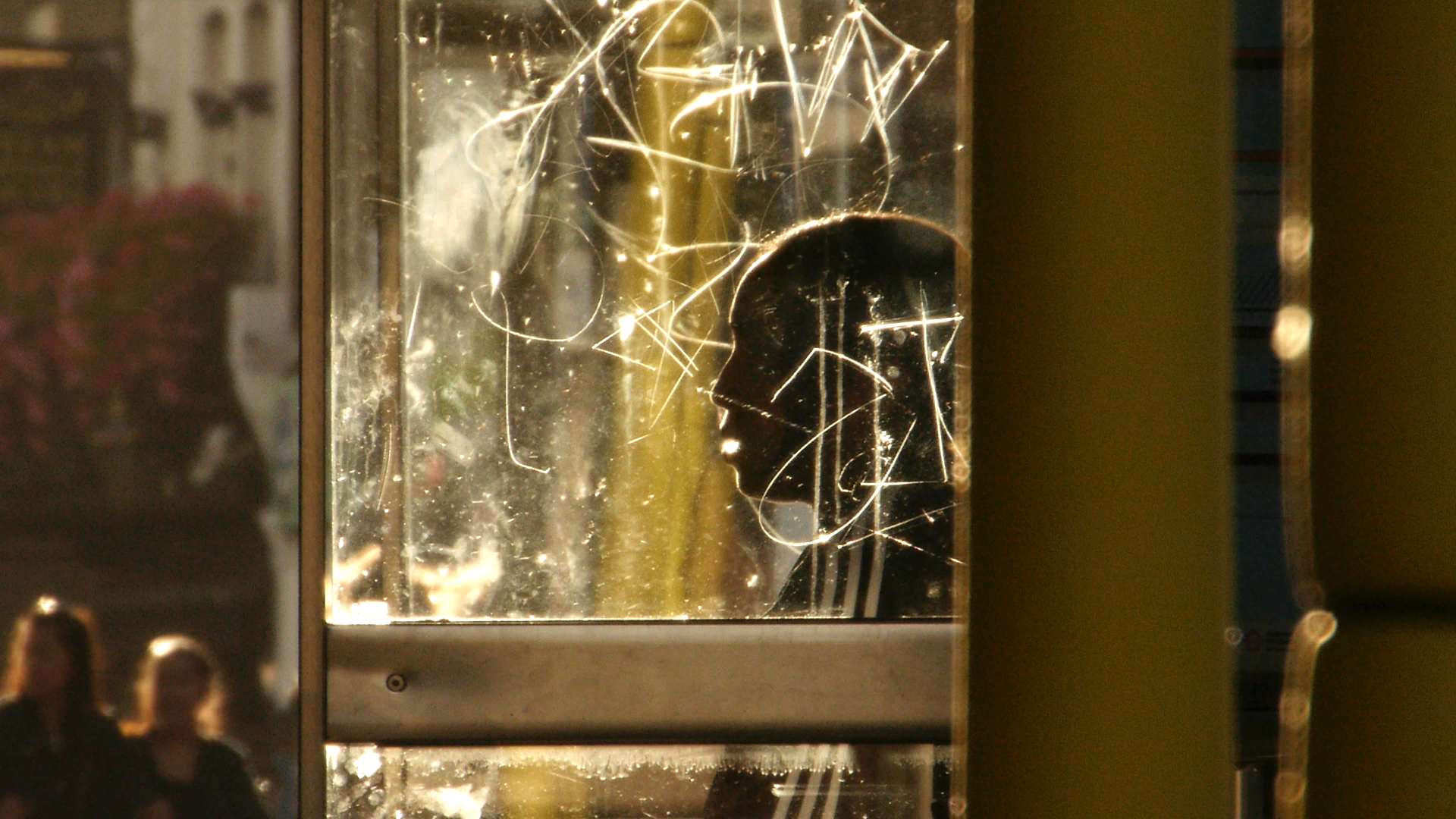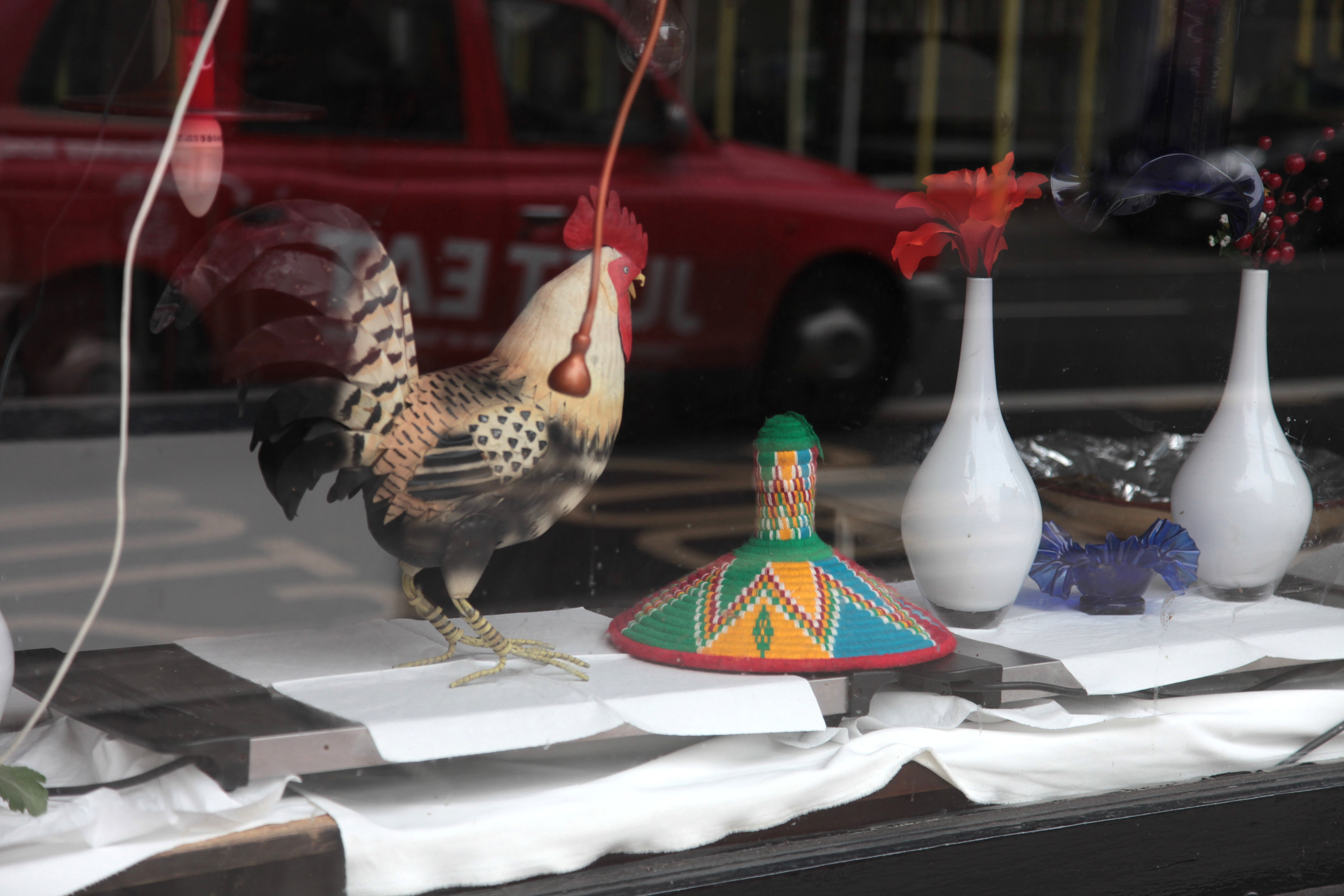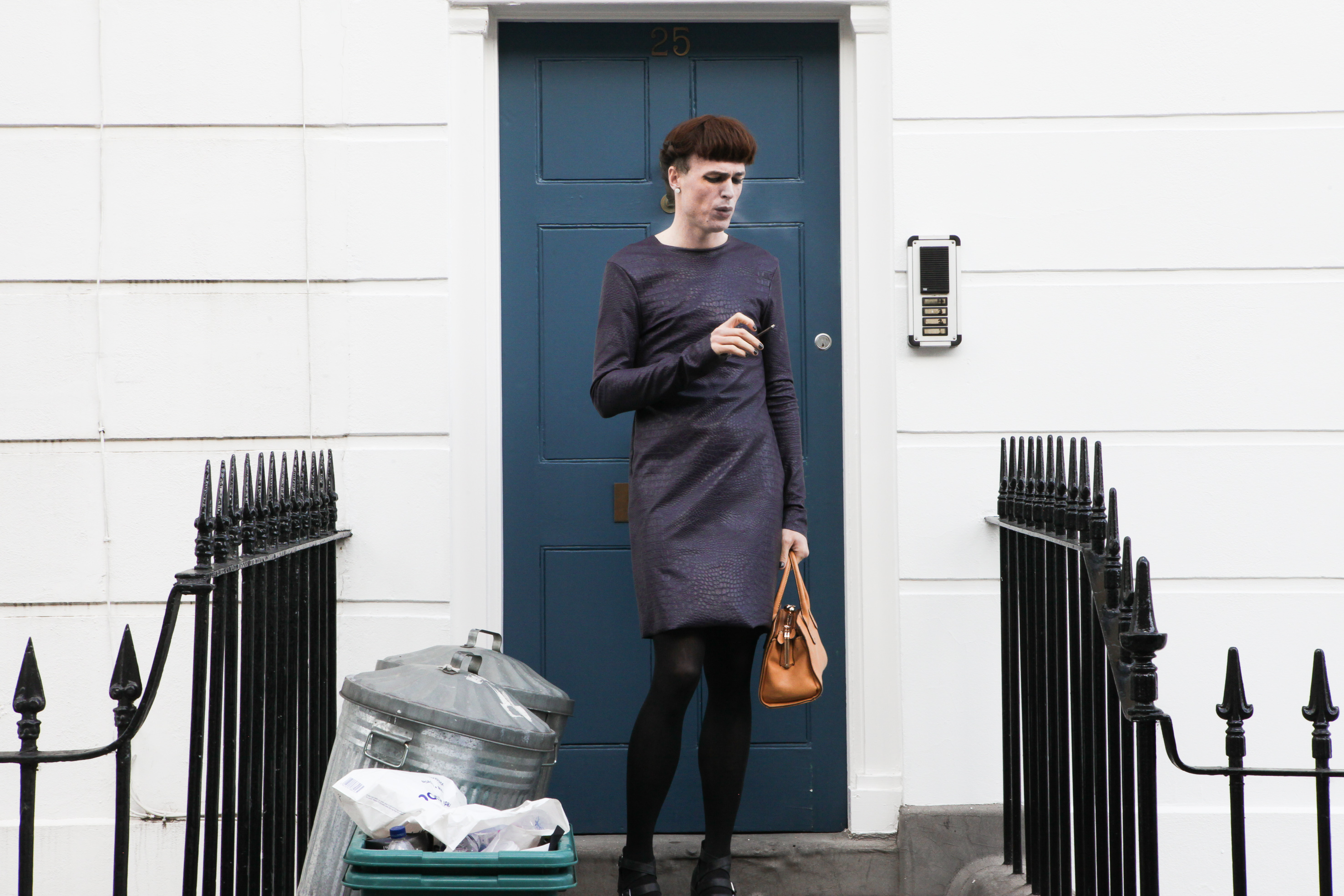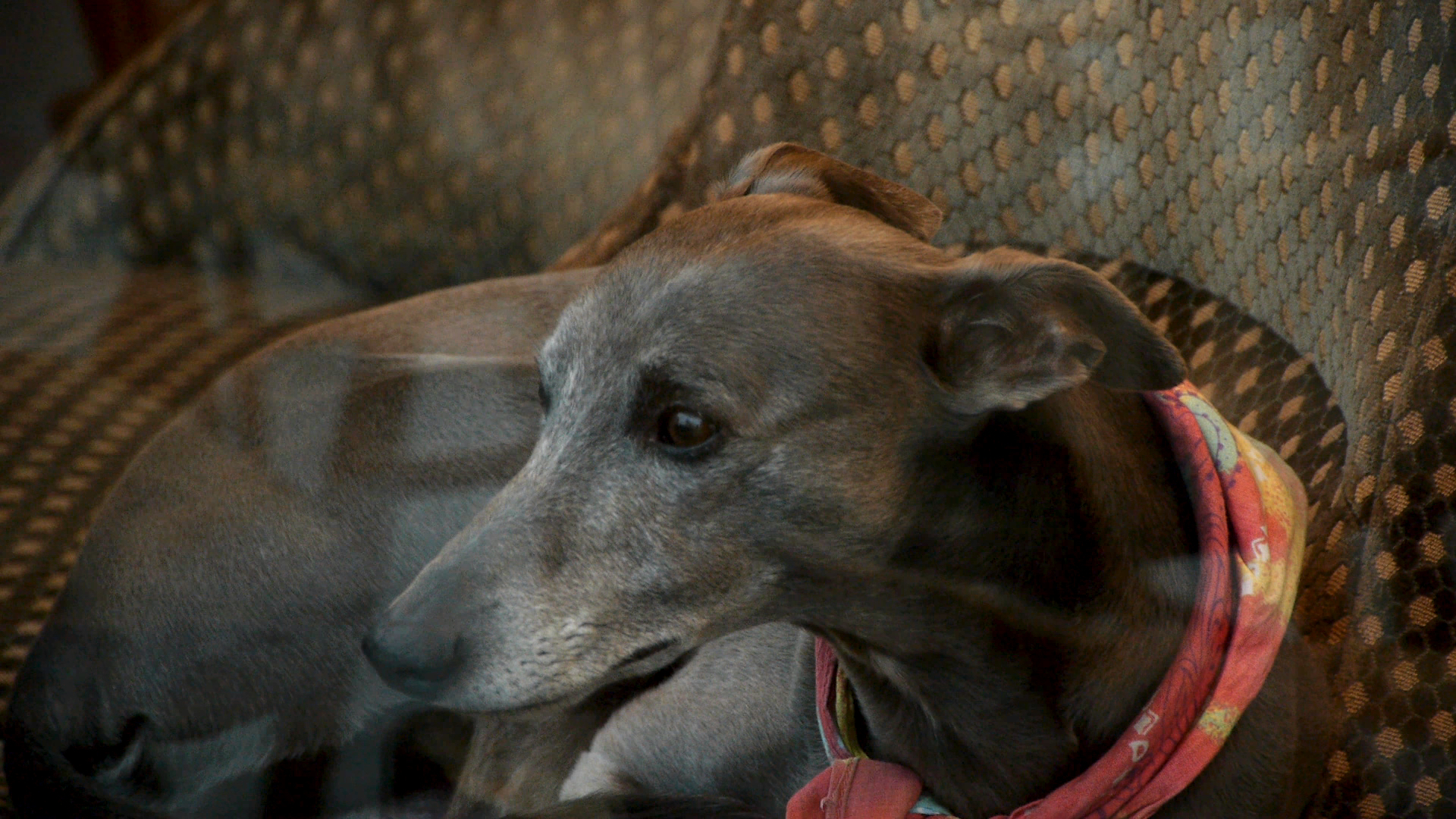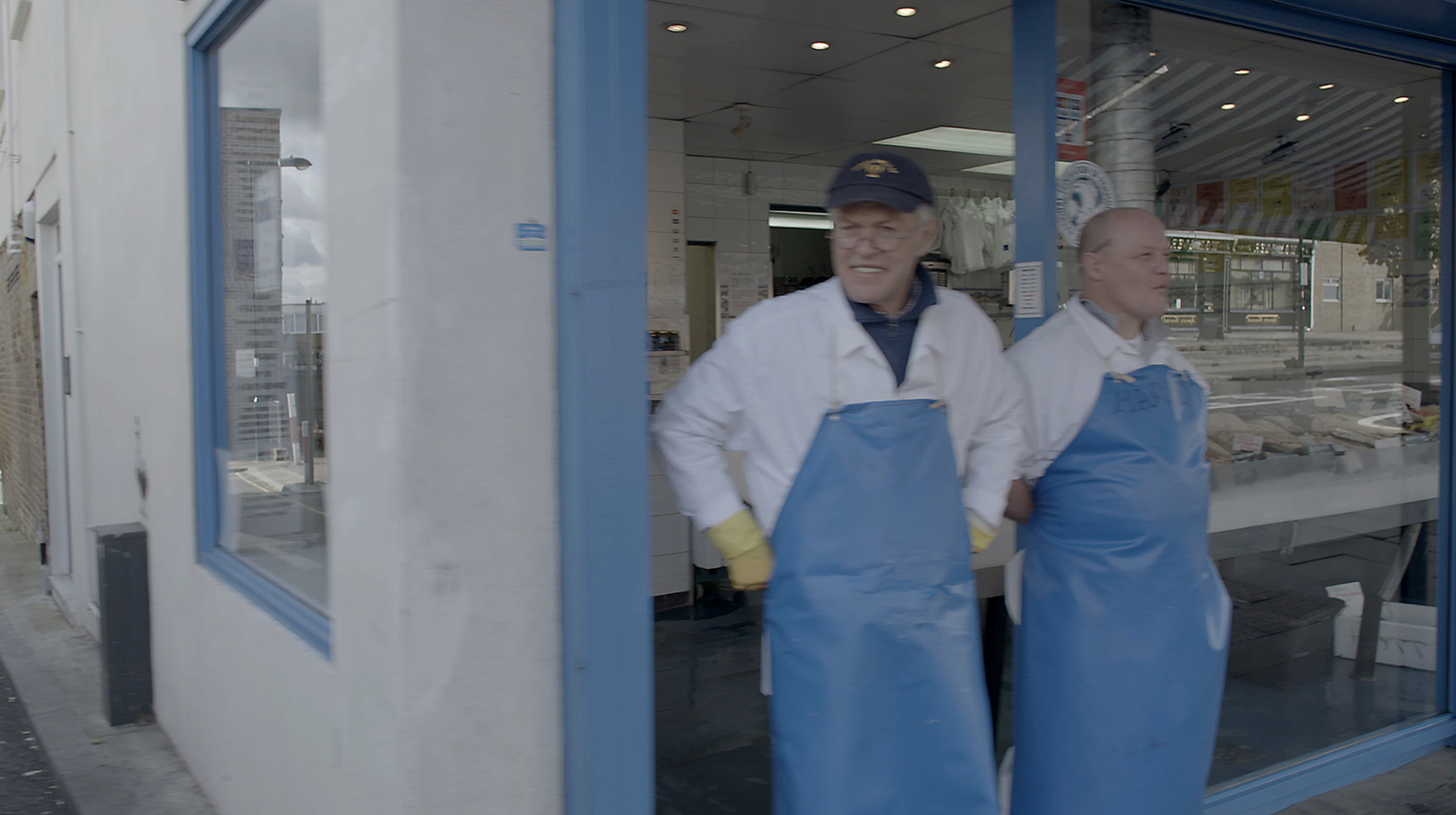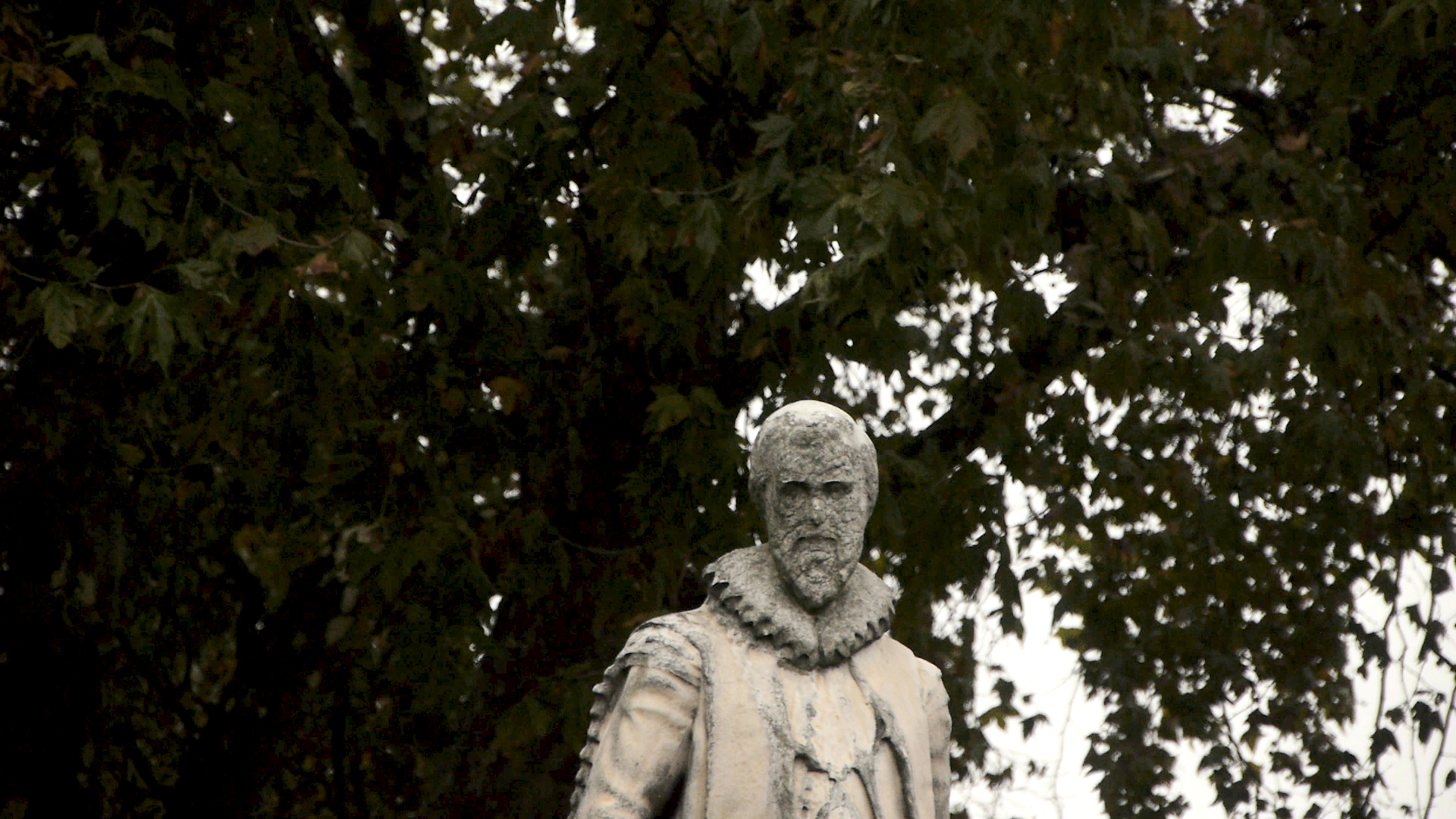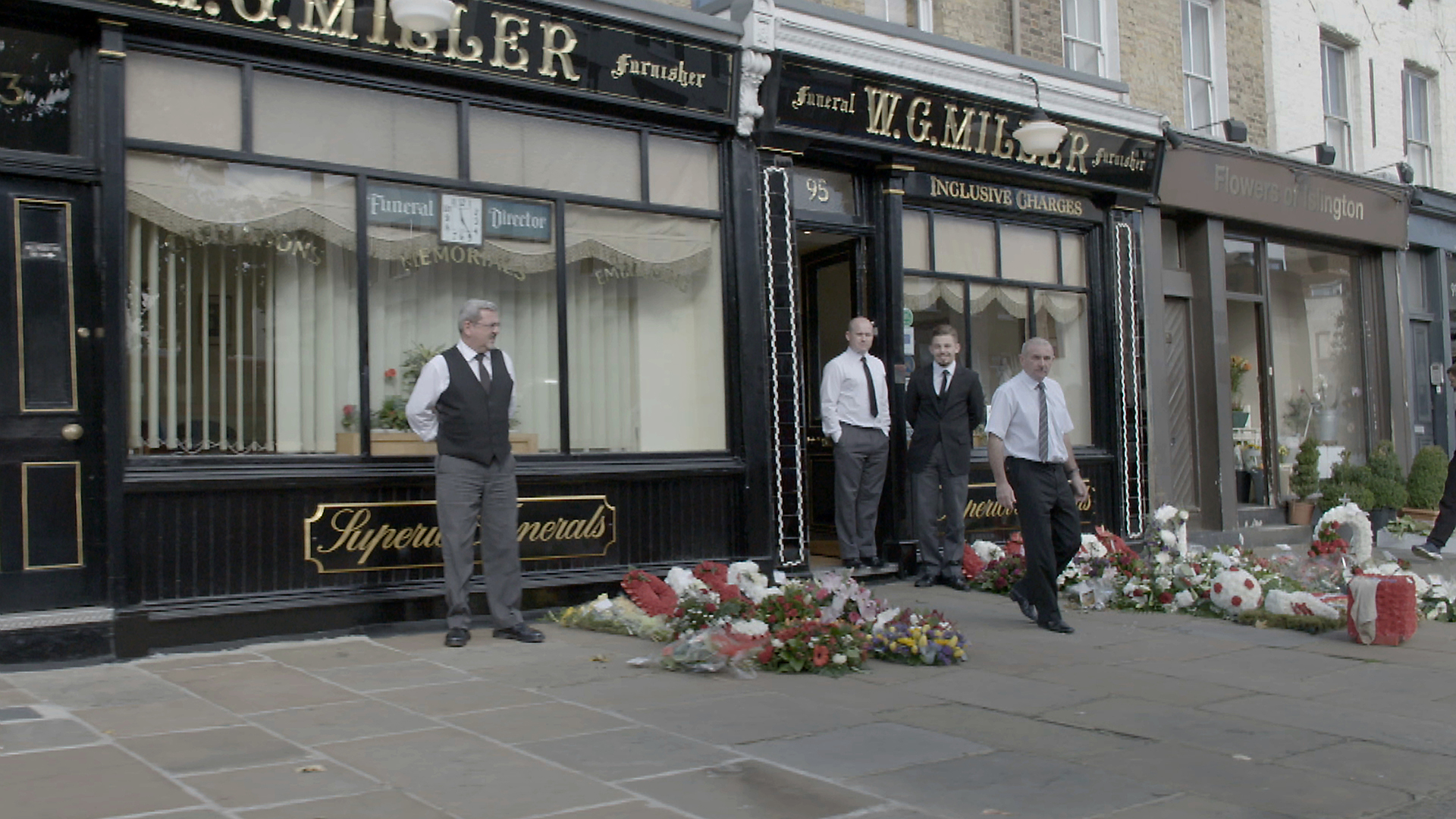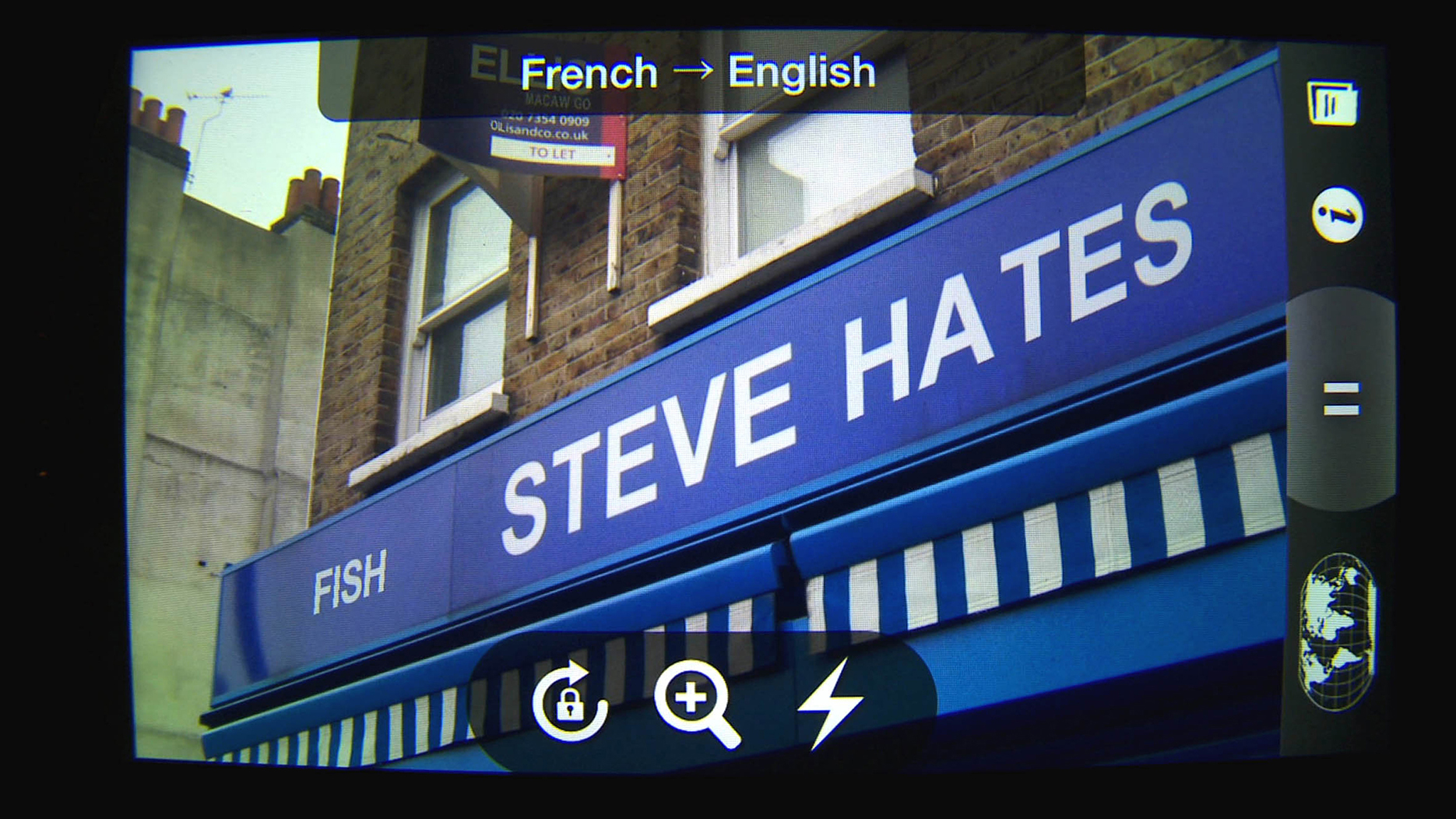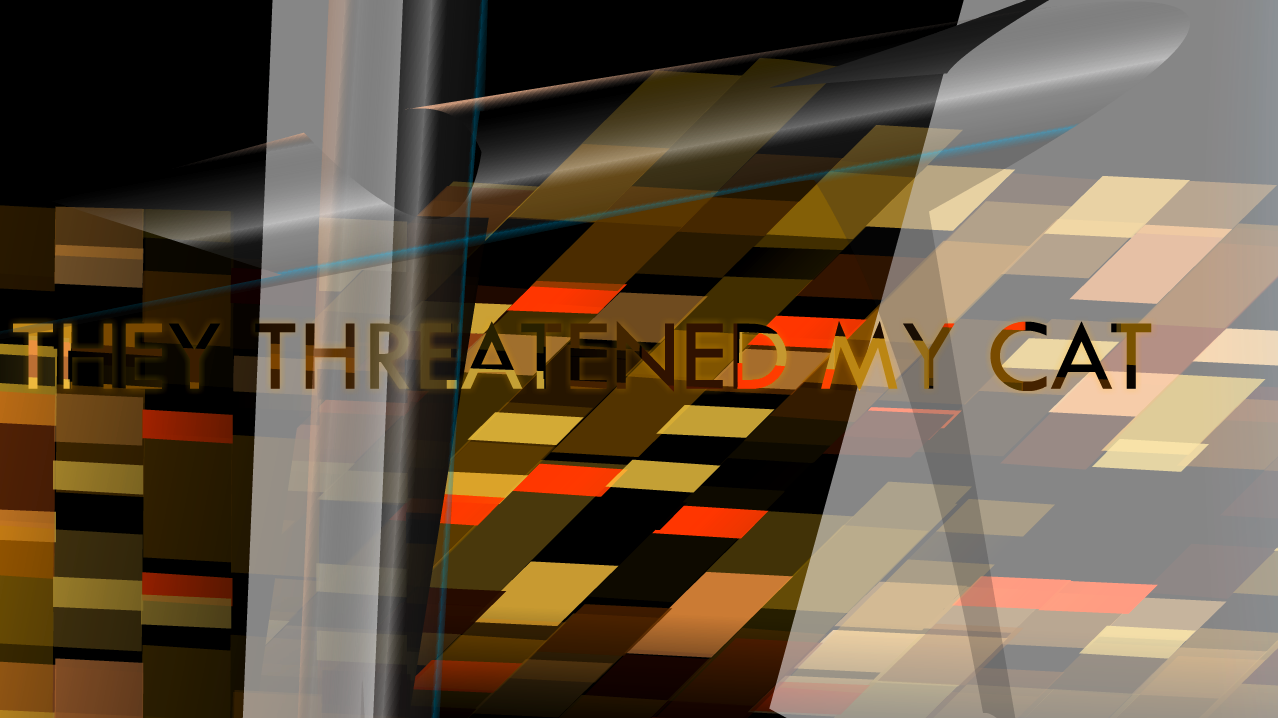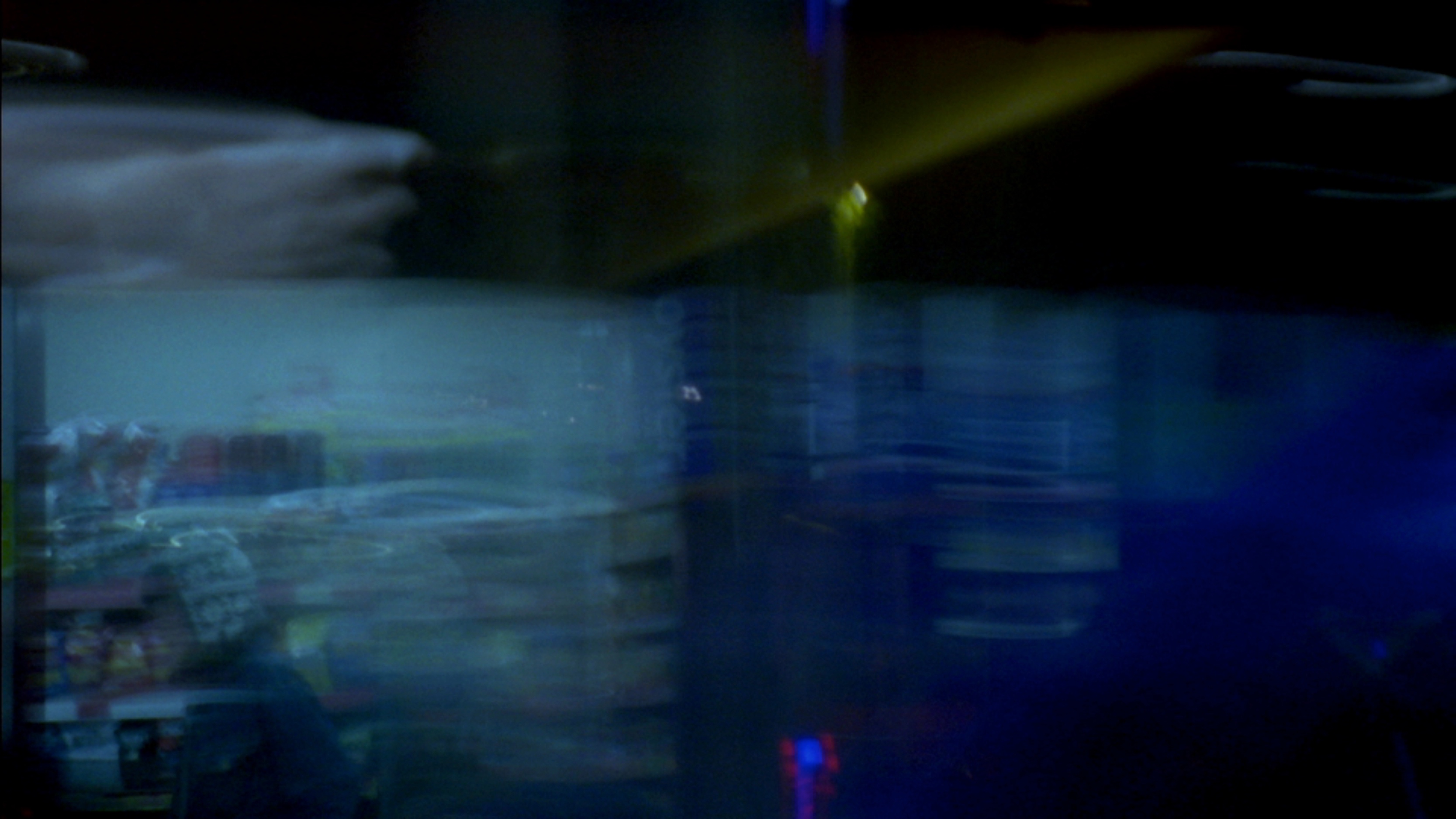Essex Road II is Tintype gallery’s second display of this kind, showing the work of eight artist-filmmakers in their front window, on a continuous loop every day from 4pm until midnight. Facing directly onto the London street of the same name–Essex Road–the videos all take their cue from the local area.
Can you tell us a little about the inspiration of the road itself on the work that is shown—very publicly—in Essex Road II?
Helen Benigson: My video is directly inspired by the nightlife of Essex Road, particularly the hen parties that take place on the road and in the area. I actually had part of my own hen party on Essex Road. I find the ritual of the hen party strange and problematic, yet antithetically also a symbol of female solidarity and friendship. The very word ‘hen’ implies a performed recoding of the sexualised body becoming animal. I am interested in the gendered codes and normative stereotypes we associate with hen parties as well as the commercialised orders and spaces that are imbued to the event. Hen parties exist between public and private space and so I used the street itself, rather than a club, home or restaurant, as the backdrop for the work. I am interested in what happens on the street as a way of thinking through the in-between space of ritual and performance.
When creating work that will be shown directly to a public street like this, do you feel you have different priorities in mind? From the very practical to the more conceptual.
Jordan Baseman: My work, E, was made specifically for this exhibition and specifically for the conditions of the location. E is a multiple exposure experimental psychedelic road movie portrait of Essex Road itself. Through walking and driving up and down and back and forth on Essex Road, using stop-frame animation on a super-16mm camera, I was able to make multiple exposures over three rolls of film. The unpredictable, out of control nature of this approach was then processed and edited to construct the 90 second sequence. My intention was to make a visually stunning work that would arrest people’s attention as they pass along the sites where the recording itself was made. A strange circle.
Was there a sense of collaboration, or did you all work separately to develop your works? Did you feel there was a lesser or greater sense of freedom than you might typically have on a group exhibition?
Sebastian Buerkner: The approach to this group show compared to others is not really different in that regard, as the direction and scale of a work is bound to an artist’s personal exploration. A group show would only juxtapose individual investigations or statements, and perhaps only during installation would there be a joint deliberation of how the works would be arranged together in the space of that show, unless, of course, it is a collaboration. You could even say that at Tintype, the given physical parameters of the work, of a window projection with a 16-by-9 format, almost soundless, and the reference to Essex Road were actually very constraining factors which shaped my development of the work in its initial phase.
You’re all described as ‘artist-filmmakers’. Has your route into filmmaking been directly art-based?
Melanie Manchot: On the most immediate level, my entire practice derives from the various discourses associated with visual art, I went to art school rather than film school–and both offer quite distinct frameworks in terms of types of training, theory and points of reference. However, while all my work across photography, film, video and installation is rooted in the history and theory of visual art it is equally informed by discourses that emerge out of literature, philosophy, politics and importantly by cinematic language. To me, there are no hierarchies to these disciplines, they co-exist and I purposefully draw on their differences and specificities–as a consequence, a range of visual languages inform the work. The work builds on indexicality of lens based media and as such the practice forms a response to and reflection on the world around us.
Many of my moving image pieces have a distinctly photographic aesthetic and sensibility: long durational takes, often with a static frame or perspective, a deliberately slow form of looking. I think of cameras–both still and moving–as strategic devices to create the situations they are employed to record. More than just an image-making box, the camera has agency and operates as an organising principle, a performative apparatus. Over the last few years, cinematic references have become increasingly important to the formal decision-making process and the work is now more invested in the grammar of cinematic devices such as specific pans and tracking shots, hard-rigging cameras as well as the use of steadicams such as in the most recent work Lower Street. So while the initial route into filmmaking emerged out of contemporary art practice it is now shaped by multiple references.
How have you experienced the medium of art filmmaking change in recent years with, for example, the boom of digital technologies?
John Smith: Technological developments have had an enormous impact on my work. I have always been a cottage industry artist who has worked independently using whatever tools that I have had to hand, and many of my ideas have been shaped by the technology available at the time. My piece for TINTYPE is a good example, as it utilises a language translator app for smart phones that interprets what the camera sees, both linguistically and visually. Only two or three years ago it would have been impossible to make this work–the technology just didn’t exist.
Essex Road II is showing at Tintype Gallery until 16 January 2016
